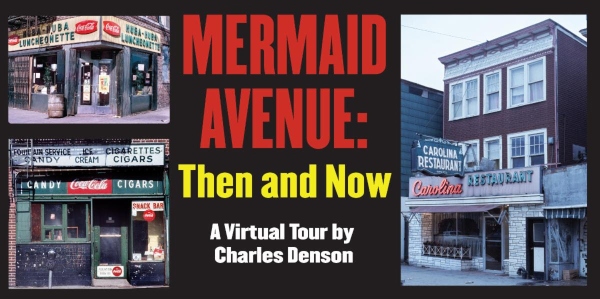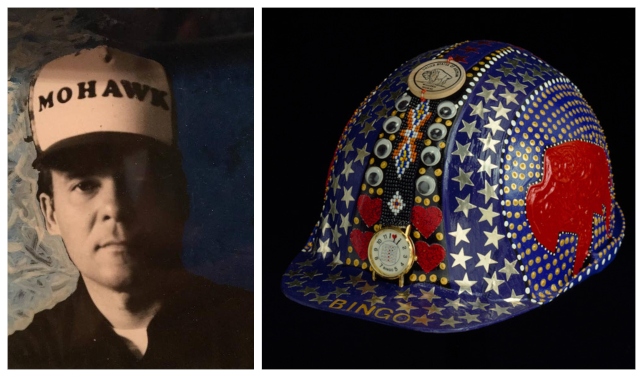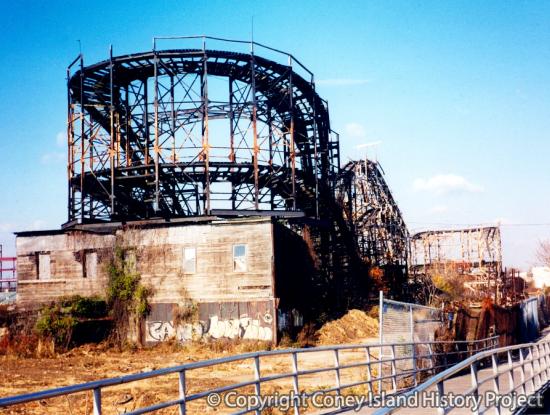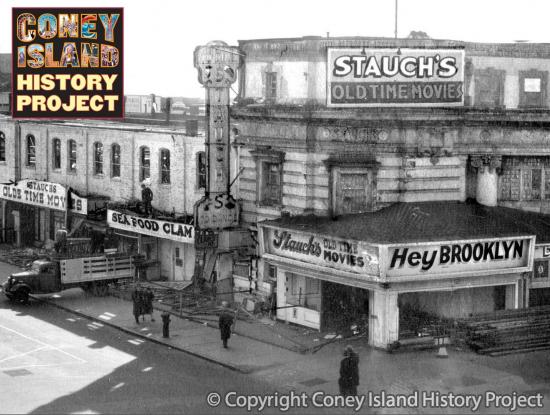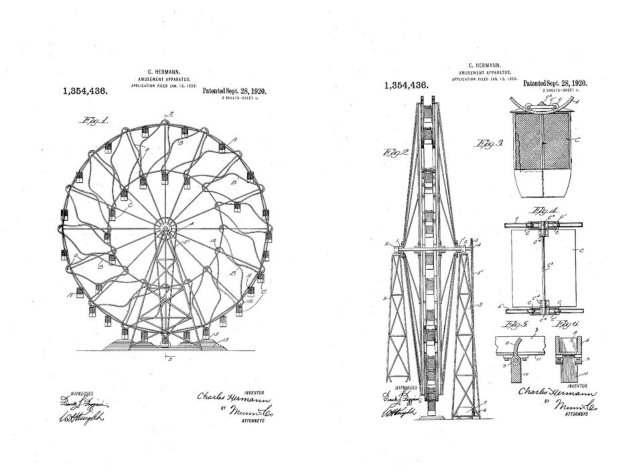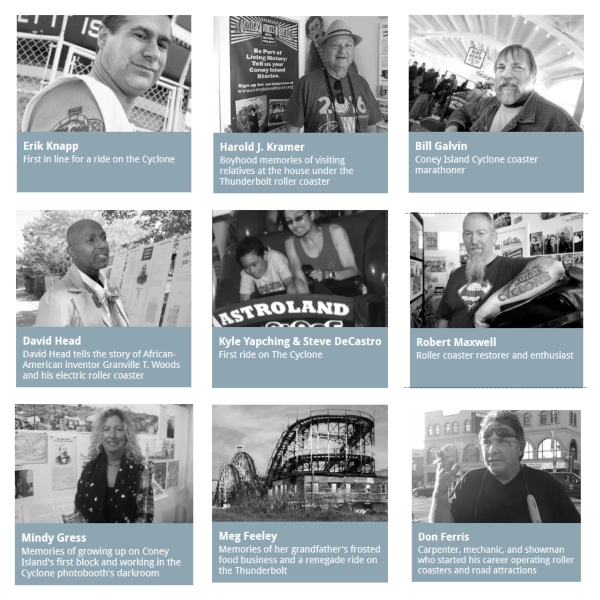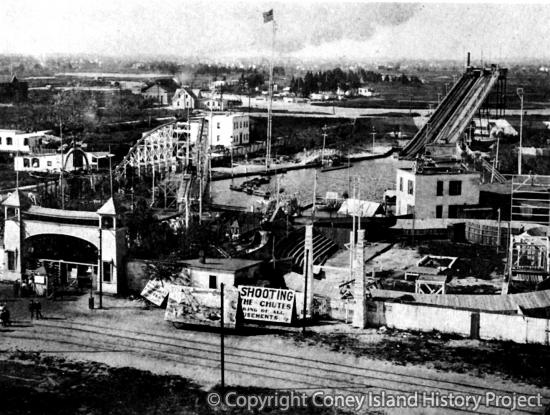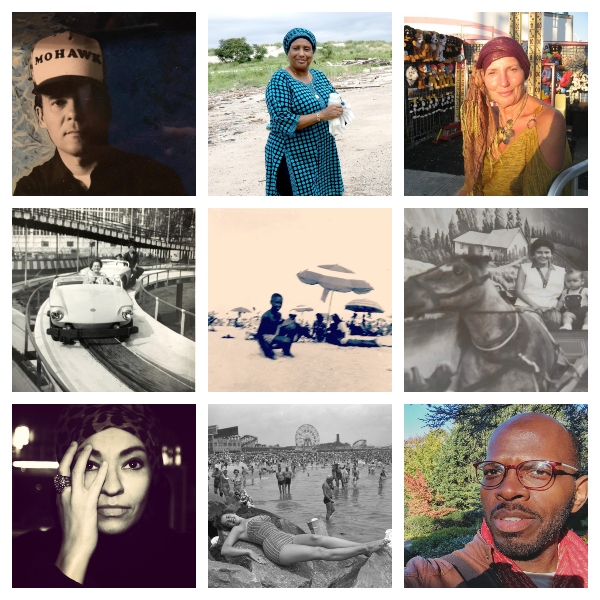
During these days of social distancing our online oral history archive was featured in the New York Times, Time Out NY, and Curbed New York as a cure for loneliness, a way to lose yourself in fascinating stories from the past, and visit Coney Island from afar. Among the new additions to the Coney Island History Project's Oral History Archive are the following audio interviews recorded by Kaara Baptiste, Charles Denson, Leila Goldstein, Julia Kanin, Ali Lemer and Tricia Vita. Please listen, share, and if you or someone you know would like to record a story via phone, Skype or Zoom, sign up here. We record interviews in English, Russian, Chinese, Spanish and other languages with people who have lived or worked in Coney Island and adjacent neighborhoods or have a special connection to these places.
Born and raised in Coney Island, artist Richard Glazer-Danay is of Kahnawake Mohawk and Jewish descent. His family first came to Coney Island with circuses and Wild West shows in the late 1800's and early 1900's and settled on West 16th Street. There were many hard hats around his house, and he became known for using these symbols of Mohawk iron workers as inspiration for his art works.
Charles Guariglia, 77, recalls that from age 9 until he went to college, he accompanied his dad on his bread route in the summer. They delivered Stuhmer's kosher bread to the Jewish delicatessens and shops along Mermaid Avenue in Coney Island. "As I look back, it was probably the one experience that helped form me as an adult," he says. "Hard work, honesty, tell the truth at all times."
Lois McLohon posed for a Daily News photographer as a bathing beauty against the backdrop of Coney Island beach and its famous skyline in 1954. When the picture appeared as a "cheesecake photo" in the paper's centerfold, she and her friends thought it was fun. It wasn't till recent years, thanks to it being posted on the web, that the photo became iconic. "I think it captures the spirit of the times," says Lois.
Melody Andorfer recalls entering and winning Nathan's Hot Dog Eating Contest in 1972, the contest’s first year. She beat all competitors, men and women. Her prize was a paper crown. Melody recently contacted the Coney Island History Project with an unusual request: she wanted help getting her victory belt, the massive, jeweled prize that's now given to winners of the Nathan's contest.
Jim Lucarelli describes "the opportunity and the privilege" of working at Coney Island's Steeplechase Park in 1963 and 1964, the last two summers before the park closed, as a teenage ride operator at the Sports Car. He vividly recalls fighting the Ravenhall Fire from the top of a wooden coaster.
Artist Alisa Minyukova emigrated from St Petersburg to New York City with her mother and grandmother in 1981. She recalls childhood memories of St. Petersburg and Coney Island, and the common visceral memory of the Soviet Union in Brighton Beach.
Richard Termini's earliest memories are of playing under the El on New Utrecht Avenue in Bensonhurst, where his family operated Termini's Bakery, and going to Coney Island’s Ravenhall Baths as a child. In 1962, he rode the Astroland Rocket, an experience that inspired a lifelong interest in designing and building high power rockets.
Born and raised in Coney Island, Marie Navarro says her family came here from Puerto Rico in 1957 and settled in Gravesend Houses in 1970. "Everybody knows each other," says Marie, "When you walk on Mermaid Avenue you run into family and friends and by the time you reach the station, it's 40 minutes, because you stop here, you stop there.”
Pamela Pettyjohn is a longtime Coney Island resident and president of the non-profit environmental advocacy organization the Coney Island Beautification Project. She talks about her involvement with community activities such as gardening and green spaces for public use.
Tapestry artist Leonid Alaverdov, 87, is a resident of O’Dwyer Gardens in Coney Island whose work is inspired by his native Baku, Azerbaijan, and New York City, where he immigrated in 1993. Recorded in Russian with Russian and English transcription.
Philly Tribune columnist Alonzo Kittrels shares memories of bus trips from the 1940s through 1961 to Coney Island with the Good Will Family Club founded by his grandmother. Since the trip to Coney was not limited to family members as many as five buses were required and there was a great deal of preparation and anticipation the night before.
Monica Ghee is a Coney Island native who has operated games at various locations in the amusement district on and off for the past 52 years. She recalls some of the games she has worked in the past, including the dime pitch, glass pitch, goldfish bowl, and her signature game - the high striker.
Actor Emmanuel Elpenord shares memories of growing up in Sea Rise apartments in Coney Island's West End in the 1990s and his unique souvenir of the Wonder Wheel. He recalls auditioning for Luna Park's Nights of Horror Halloween event in 2012, in which he was cast as the Devil. "I still treasure the experience as like my little badge of carnydom in having worked at Coney Island," says Emmanuel. "I'm one of the freaks too."
